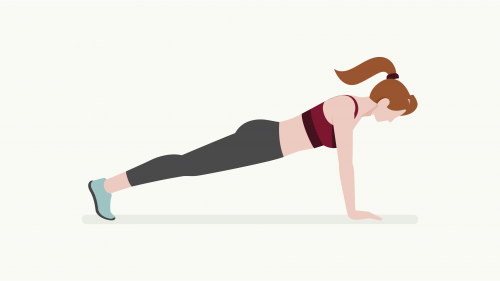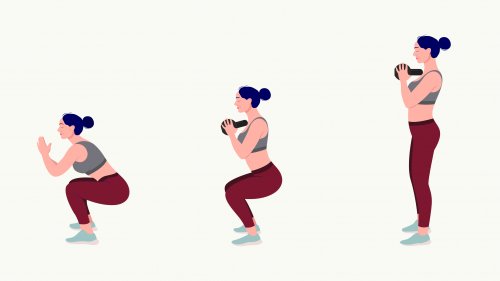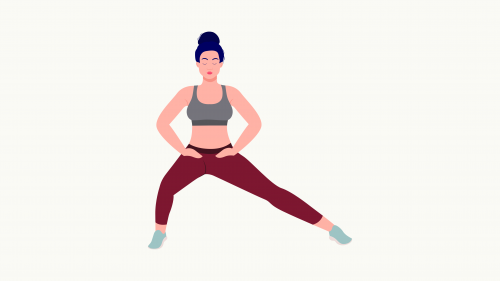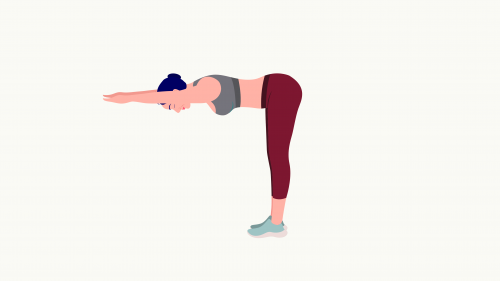Our Favorite Bodyweight Exercises
It’s a difficult task to prioritize time for exercise and maintain fitness. Between work responsibilities, balancing home life, children, and travel, it’s easy to de-prioritize exercise. And when people do think about exercise, it’s often cardio. However, don’t forget stretching and support body strength. Many people are intimidated by free weights at the gym, but exercising needn’t always take place there! Here are some of our favorite exercises that you can complete almost anywhere — at home or on the road.
Plank

This classic bodyweight exercise strengthens your abdominals and your pelvic floor. Your body’s core is the foundation of a person’s strength: your core muscles support your spine and pelvis and are crucial for balance.
- Start in on all fours; like for cat-cow, make sure your arms are directly beneath your shoulders.
- Step one foot back at a time so that your heels are directly above your ankles.
- Maintain a straight line from your head, along your spine, to your ankles. To achieve this: engage your core, draw your belly-button to your spine, and squeeze your glutes.
- Look straight down at the ground, and not at your toes to maintain your straight spine.
- Hold for as long as you can, then lower your knees for 10 seconds and repeat 10 times.
- If this hurts your wrists, or you begin to get tired, lower to your elbows and/or your knees.
Traditional Squat

Strength training builds the muscles we need to burn calories and also helps counteract osteoporosis and the effects of a catabolic (or decaying) metabolism. The glutes are the largest and most powerful muscle system in the body! The traditional, unweighted squat is an excellent strength challenge for the glutes, quads, and hamstrings — it even strengthens your lower back and abdominals. As such, it’s an incredibly efficient bodyweight workout.
- Stand with your feet hip-width apart, with your toes facing forward. With, or without holding weights.
- Relax your shoulders away from your ears and hold your arms by your sides.
- Then, lower yourself until your thighs are parallel to the floor, almost like you’re sitting down in a chair.
- Keep your chest high and your weight in your heels, not your toes!
- Slowly raise yourself to stand by pressing into your heels and engaging your glutes.
- Make sure your pelvis is tilted forward to keep any strain off your lower back.
Challenging yourself? Try jump squats — squat deep, and on your way back up thrust yourself into the air, pointing your toes.
Side Lunge

So much of our daily movement is on the forward and backward plane of motion, leading to tight hip flexors and hips. This is an excellent exercise to stretch and strengthen your lower body and core.
- Begin with your feet hip-width apart, your hips square, and your shoulders over your hips.
- Take a wide lateral step, and bend into that knee as low as you can without lifting your heels.
- Engage your core to keep your chest high, and your weight in your heels, not your toes!
- Feel the stretch along your inner thigh.
- Slowly raise yourself to stand by pressing into your heels and engaging your glutes.
- Repeat on each leg 10 times
Standing Hip Stretch

Flexibility is so important, especially as we age. If we don’t continue to lengthen our muscles, we’ll end up with less range of motion. Stretching should occur right when you wake up, intermittently throughout the day, before and after workouts, and just before bed — even if just for 5 minutes. When stretching, be mindful, focusing on the muscle you’re working. Relax with each exhalation, and don’t push too hard — this risks overextension. Ride the line of challenging yourself without putting yourself in pain.
One of our favorite stretches can be done anywhere. This stretch counteracts the rounding of the back that occurs while sitting at a desk.
- Find a desk or table that is hip height. Alternatively, you can use a wall.
- With hands firmly placed on the desk and your feet hip-width apart, walk your feet back, creating a 90-degree angle in the body.
- Extend your sitting bones back, opening the chest and armpits while lengthening the spine.
- Feel the stretch along the entire backs of your legs, your spine, chest, shoulders, and arms.
- Take three big, deep breaths, and slowly walk yourself back to a standing position.
What is Mountain Trek?
Mountain Trek is the health reset you’ve been looking for. Our award-winning retreat, immersed in the lush nature of British Columbia, will help you unplug, recharge, and roll back years of stress and unhealthy habits. To learn more about the retreat, and how we can help you reset your health, please email us at info@mountaintrek.com or reach out below:


